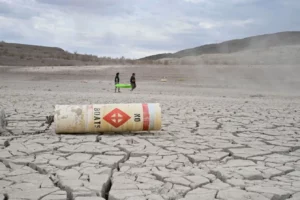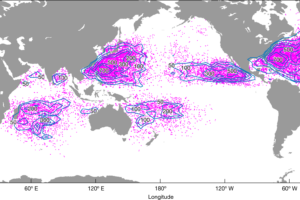As intense heat becomes more frequent, the Middle East will see a rise in heat-related deaths. Despite public health planning gaps, experts say the region can teach us a lot about extreme heat.
When the thermometer threatens to rise over a baking 50 degrees Celsius (122 Fahrenheit) in Iraq, locals usually get a holiday and are told to stay inside, said Kholoud al-Amiry, founder of a Baghdad-based network for female journalists working on climate change stories.
“Usually we get that information on [the state-run television channel] Al Iraqiya, or it might be posted on Facebook,” al-Amiry told DW. “They will tell you not to go to work and they also tell anybody who is vulnerable to stay inside. They also always tell us to put bowls of water out under the trees for the birds and other animals.”
But that, al-Amiry said, is about it. Mostly Iraqis feel as though they’re on their own in a heat wave.
“People learn to live with the heat and they adapt all the time,” she continued. Adaptations include anything from refitting fans to make them more efficient to closing up the upper story of a house in the summer.
“Basically, Iraqis will try to solve these problems themselves because they don’t have much faith that the government will help them,” said al-Amiry.
The state’s neglect of these sorts of problems comes despite the fact that, of all of the people in the world, those in the Middle East are most in danger from extreme heat.
Heat deaths set to rise in Middle East, North Africa
In May, new research was published in the science journal, Nature Sustainability, mapping out the impact of extreme heat around the world, should global temperatures rise by more than 1.5 degrees Celsius (2.7 degrees Fahrenheit) over the next 50 years. Extreme heat is classified as the average annual temperature being up around 29 degrees Celsius.
The paper found that the majority of people in the Middle East will be exposed to extreme heat by 2050.
In April, another study published in British medical journal The Lancet looked at how many more heat-related deaths might occur in the Middle East and North Africa if the planet continues to warm. It said the number of locals in the region that would die of heat-related causes every year would likely rise from an average of about two such deaths per 100,000 people today to about 123 per 100,000 people in the last two decades of the century.
That means that by 2100, around 138,000 people would likely die of heat-related causes every year in Iraq.
Older people, city dwellers most at risk from heat
The Lancet study also noted that demographics and the increased movement of people into cities in the Middle East will have an impact on how extreme heat affects locals. By the 2050s, almost 70% of the population is expected to be living in big cities and by 2100, older people will outnumber the young in the region.
“Both advanced age and high population density are key risk factors for heat-related illness and mortality,” wrote the study’s authors from The London School of Hygiene & Tropical Medicine and The Cyprus Institute.
This is because older people are more physically vulnerable. And cities tend to be hotter due to what’s known as the “urban heat island” effect. This is caused by things like denser building, dark asphalt streets absorbing heat and a lack of foliage. Cities can be anywhere between 2 and 9 degrees Celsius warmer than surrounding countryside.
“Even though extreme heat is the deadliest meteorological hazard in an average year, it often is underestimated or ignored,” Eleni Myrivili, the global chief heat officer for UN Habitat, the United Nations’ Human Settlements Program, told DW. “To respond effectively to this threat, governments need to have a clear course of action to increase awareness, preparedness and resilience.”
Source: dw











Add Comment